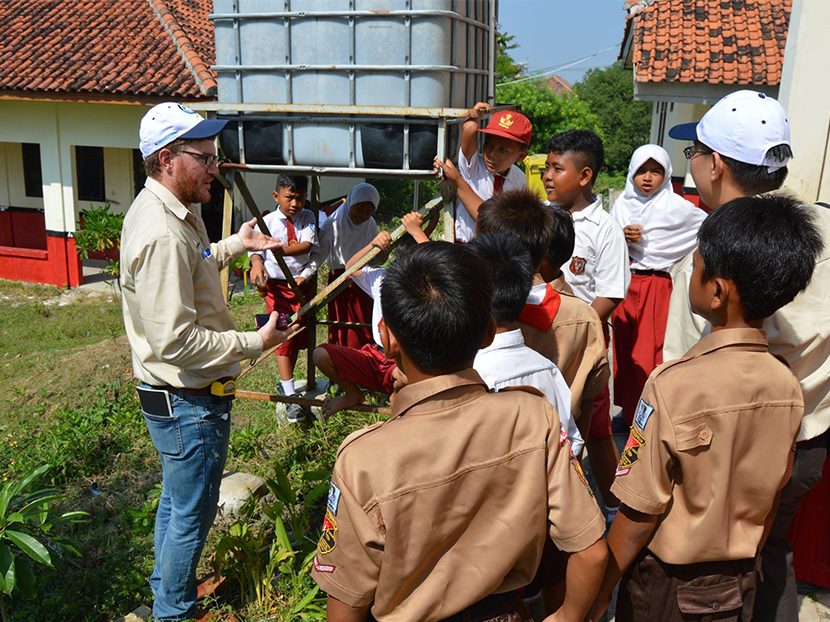2017 Community Plumbing Challenge
Improving plumbing and sanitation in an Indonesian grade school.

If you refer to the popular “Maslow’s hierarchy of needs” pyramid, basic plumbing needs probably fall somewhere toward the bottom under “safety.” Far too often, people take basic plumbing for granted, or forget it is even there until the toilet backs up or the hot water heater isn’t working. However, not only is potable drinking water hard to come by in developing nations, but also, the safe transportation of human waste to a treatment facility is extremely questionable.
 I recently had a great opportunity to participate in the 2017 Community Plumbing Challenge, hosted by IAPMO and IWSH in Cicau Village, Cikarang, Indonesia as a part of the design team. The team was tasked with designing a sustainable upgrade solution for water supply and wastewater systems along with new toilet facilities and a new septic system at a local grade school.
I recently had a great opportunity to participate in the 2017 Community Plumbing Challenge, hosted by IAPMO and IWSH in Cicau Village, Cikarang, Indonesia as a part of the design team. The team was tasked with designing a sustainable upgrade solution for water supply and wastewater systems along with new toilet facilities and a new septic system at a local grade school.
Plumbing systems and general bathroom usage practices are very different in Indonesia than in the U.S. For example, predominately only the toilets are connected to the septic or city sewer system. All other fixtures in the building are routed outside to an open sewer system alongside the home or at the street. The use of toilet paper is not common. Learning the local bathroom etiquette and speaking with local plumbers was incredibly valuable in aiding the overall design.
The primary challenges of designing this system were finding an easily constructible system within the property lines and locating readily available materials within the area. The final design included new handwashing stations, two elevated water tanks for a few days’ worth of storage (in case of main utility disruptions) and all the sink-piping will now enter a new septic tank instead of spilling onto the grade. This design will provide cleaner sanitation systems, which will hopefully improve the health of the children.
The most humbling part of the whole experience was seeing the excitement of the children. They were thankful to see that we were there for them and shocked to learn that their waste goes somewhere when it “disappears.” I may have gotten too technical for their age range when I tried to explain how elevating a water tank creates more water pressure, but they humored my inner plumbing nerd.

I greatly appreciate the American Society of Plumbing Engineers for providing me the opportunity to participate in this amazing challenge and to be a part of something that will improve children’s lives. I highly recommend anyone to participate in future Community Plumbing Challenges or global plumbing design opportunities. The experience will give you such a feeling of accomplishment and peace that you have helped someone less fortunate than yourself.




